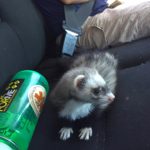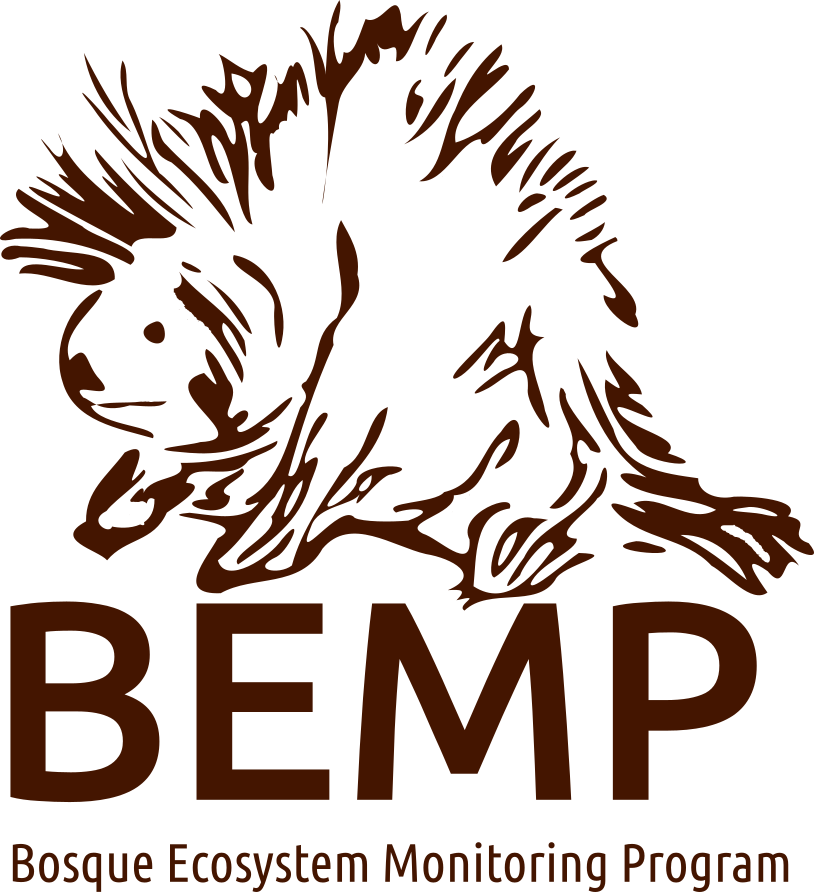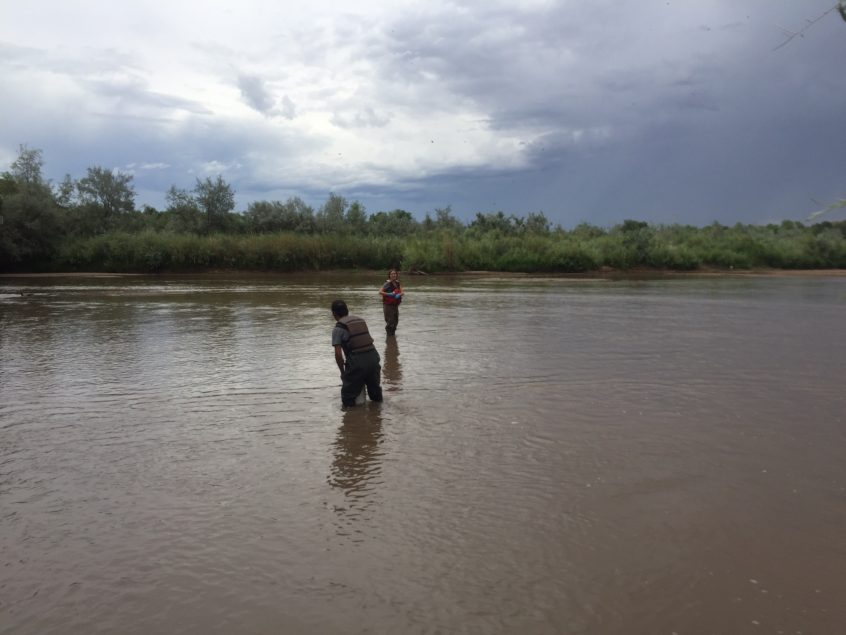Post by Jonathan Tyrrell, BEMP HS Intern 2017
On July 27, 2017, I participated in BEMP’s monthly water chemistry field day for the second time in my summer-long internship with BEMP. Eager to return to the Rio Grande after last month’s adventures in monthly monitoring, I woke up early Thursday morning to beat the heat.
As the summer draws to a close, I look back fondly on the field days I have had this summer, perhaps most fondly on June’s water chemistry field day. As one of my first field days with the BEMP team this summer, I remember my excitement of piling into Shermie (BEMP’s field van) with BEMP staffers Kim Fike, Sean O’Niell, Rowan Converse, and Matt Leister as well as fellow high school interns Laura Montoya and Sebastian Gutierrez. I expect we shared the same mixture of nervousness and excitement, to spend our summer with BEMP. That day, I learned of the camaraderie and passion which defines BEMP field days, as we laughed through leaky waders, ogled Matt’s bug finds, saved Kim from falling in the Rio, and returned to the office, brow-beaten, but satisfied with the day’s work. The BEMP team – especially in the field – becomes a family.
For BEMP’s water chemistry field days a team of BEMP staff gear up in water-waders and life vests and walk out into the Rio Grande at five sites: the State Land Office, BEMP’s site at Bosque School, near Bachechi Open Space, at the North Diversion Channel in Northern Albuquerque, and where the Rio Grande intersects Highway 550 in Bernalillo. At each site, staff split up various tasks, such as measuring the river’s pH, conductivity, turbidity, amount of dissolved oxygen, as well as sampling water for E. coli. Each site of monitoring is different: the Bosque School site is under the Montano overpass, where dozens of cliff swallow nests can be found; at North Diversion, staff must walk out on a bridge over the water; and at Highway 550, the team has to bushwhack through willow overgrowth just to find the river. A day of field work like this represents the diversity one comes to expect from the Bosque and the flexibility a field biologist must maintain to monitor it.
I was remarkably excited to return to perform water chemistry in late July. This time, I set out from UNM with Dr. Kim Eichorst, Rowan, Matt, and Laura on an overcast morning. Upon arrival at the State Land Office, we were greeted by sprinkles in the air, little toads on the ground, and mosquitoes all around us. As Dr. Eichorst, Rowan, and Laura collected and recorded the data, Matt and I helped rescue a catfish off a fisherman’s forgotten rope, returning it to the river. We drove off, leaving the rain and approaching thunder behind us. The sites near Bosque School and Bachechi proved uneventful, save the detour we had to take back to Bosque School, after realizing we had left our air temperature logger behind.

Then, at North Diversion, an otherwise routine day took a turn for the eventful. First, our team got to see the rainwater diversion in action, full from the rain of the night before. Second, though, we gained another member to our party – as we drove away from the site, Laura spotted a ferret, sitting atop a mound aside the nearby irrigation ditch. White with black streaks, the poor creature was very out of place, as it had probably been released pet – hopefully from close in the area. The team scrambled out of the car, eager to take a closer look at the critter, who was frazzled, yet seemed glad to be rescued. As we drove to our final stop of the day, the monitoring site in Bernalillo, Rowan, Laura, and Dr. Eichorst cooed over the “poor baby,” attempting to hydrate and relax our new friend – who we found was female and quickly named Kestral, after the brand of air temperature logger we had nearly lost earlier that morning.
As we drove back to Albuquerque, we decided to split up, Matt staying with Kestral at a veterinarian’s office, so our lethargic ferret friend could get a quick check-up, while Laura, Dr. Eichhorst, Rowan and I took our gear and samples back to the UNM area. We had set out at 8:30: it was nearly 4 pm as we arrived back at UNM. Matt reported that Kestral was going to be just fine – she was only slightly dehydrated and had ear mites from, I’m sure, her own adventures in the Bosque. Matt had decided to keep Kestral, although there was a line behind him – she had burrowed her way into the heart of our small team.

Retrospectively, I am glad I decided to write about water chemistry, for the same reason I am glad I got to share my summer with BEMP. Every day is an adventure in the field, whether observing the local flora and fauna, simply collecting data sets with knowledgeable and engaging BEMP staff, or rescuing fish and ferrets. With BEMP, my appreciation for the consistency of the Rio Grande ecosystem has been enhanced; moreover, my excitement for its unexpectedness has been fully unlocked.
Jonathan Tyrrell will be attending UNM this Fall (2017) to study biochemistry. He has been a long-time BEMPer through his former school Roots-N-Shoots, and monitored the Rt. 66, Harrison, and Rio Grande Nature Center BEMP sites for many years with his classmates. We were thrilled to have Jonathan on staff this summer to continue his engagement with BEMP and we hope to see more of him in the future!

